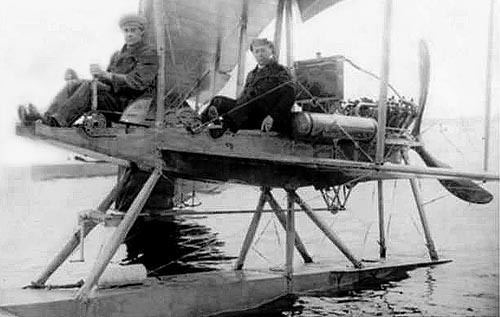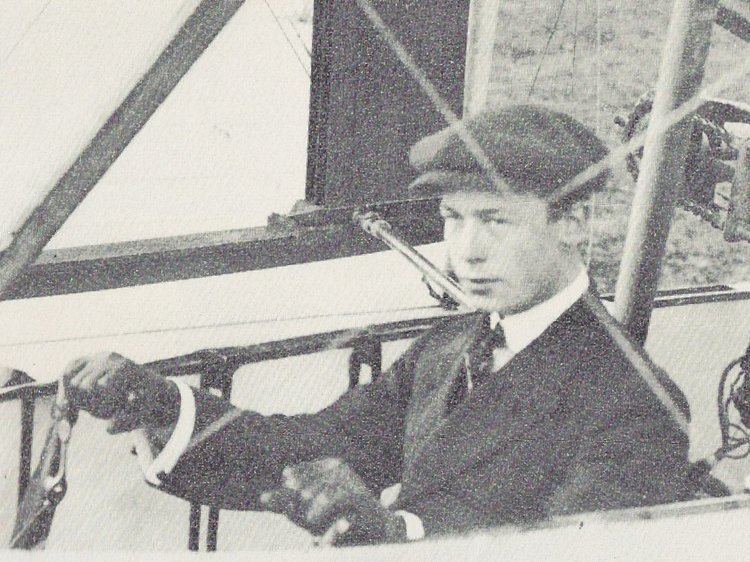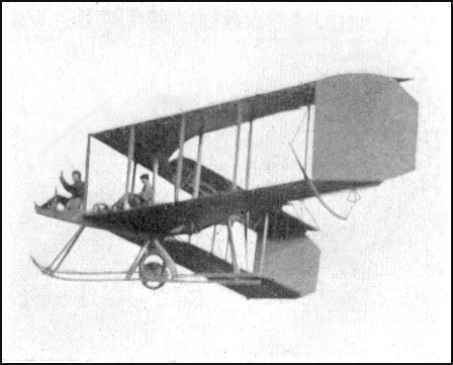Name John Dunne | Role Aeronautical engineer | |
 | ||
Occupation SoldierAeronautPhilosopher Spouse(s) Cicely Marion Violet Joan Twisleton-Wykeham-Fiennes Children John Geoffrey Christopher DunneRosemary Elizabeth Cecily Dunne Parents Julia Elizabeth Dunne, General Sir John Hart Dunne Books An Experiment with Time, The Serial Universe, The New Immortality, Sunshine and the Dry Fly, Nothing Dies | ||
John William Dunne FRAeS (1875–1949) was a British soldier, aeronautical engineer and philosopher. As a young man he fought in the Second Boer War, before becoming a pioneering aeroplane designer in the early years of the 20th century. Dunne worked initially on early military aircraft, concentrating on tailless swept wing designs to achieve the first certified inherently stable aircraft. He later developed a new approach to dry fly fishing before turning to philosophy, where he achieved some pre-eminence and literary influence through his theory on the nature of time and consciousness, which he called "Serialism".
Contents
- Biography
- Military career
- Aeronautics
- Later years
- Death
- Aircraft
- Dry fly fishing
- Dreams and serialism
- Literary impact
- Published works
- References

Biography

John William Dunne was born in County Kildare, Ireland, the oldest son of General Sir John Hart Dunne KCB (1835–1924) and Julia Elizabeth Dunne, Anglo-Irish aristocrats. His later life and career was mainly in England.

From an early age he was interested in philosophy and the nature of Time. At the age of 13, inspired by a Jules Verne novel, he had a dream in which he was in a flying machine that needed no steering.
Military career

Dunne volunteered for the Imperial Yeomanry as an ordinary Trooper and fought in the Second Boer War in South Africa, under General Roberts but in 1900 was invalided home with typhoid.
Recovered and commissioned as a Second Lieutenant in the Wiltshire Regiment on 28 August 1901, he went back to South Africa to serve a second tour in March 1902. He fell ill again and was diagnosed with heart disease, causing him to again return home the next year. Much of his remaining time in the Army would be spent on aeronautical work while on sick leave.
Aeronautics
While on Army sick leave in 1901, Dunne began a systematic study of flight. Like many other pioneers he closely observed birds in flight however, unlike most, he was convinced that a safe aeroplane needed to have inherent aerodynamic stability. Encouraged among others by H.G. Wells, whom he befriended in 1902, he made a great number of small test models which would eventually lead to the development of a stable tailless swept wing configuration.
On his return to England for the second time he resumed his study of flight and by 1906 had developed a tailless, swept-wing "arrowhead" configuration which was inherently stable and would become his trademark.
At the request of Colonel John Capper, the unit's commanding officer, in June 1906 he was assigned to the new Army Balloon Factory in South Farnborough.
A manned glider, the D.1, with provision for fitting engines and propellers, was constructed under great secrecy and, in July 1907, was taken to Blair Atholl in the Scottish Highlands for flight testing. The D.1 made several unsustained glides during secret trials conducted in the hills north of the village. On its one successful flight, Capper flew it for just long enough to demonstrate its stability before crashing into a wall. It was repaired and fitted with its powered chassis, but crashed on its first attempted flight when the takeoff trolley veered off course.
In the winter of 1907–1908 Dunne designed the Dunne-Huntington triplane and a smaller glider, the D.2, to test the design. The glider was not built but the full-scale craft would eventually be built by A. K. Huntington and flown successfully from 1910.
The 1908 season at Blair Atholl saw two new "arrowhead" machines brought up from Farnborough, the D.3 man-carrying glider and the D.4 powered aeroplane. The glider eventually flew well at the hands of Lt. Launcelot Gibbs and the D.4 had limited success being badly underpowered and consequently, in Dunne's words, "more a hopper than a flyer".
Dunne returned to the Balloon Factory in the midst of a Government Inquiry into military aeronautics. As a result of its findings the War Office stopped all support for powered aircraft and in the Spring of 1909 Dunne left the Balloon Factory. By now, he was also an official in the Aeronautical Society.
With his friends' financial investment Dunne formed a small company, the Blair Atholl Aeroplane Syndicate, to continue his experiments and took up hangar space on the Aero Club's flying ground at Eastchurch on the Isle of Sheppey. Short Brothers had a workshop there and were contracted to build the D.5, a similar biplane in which Dunne installed a more powerful 35 hp engine. Following a series of increasingly successful flights, on 20 December 1910 Dunne demonstrated the extraordinary stability of the D.5 to an amazed audience that included two official observers, Orville Wright and Griffith Brewer. He was even able to take both hands off the controls and make notes on a piece of paper. Shortly afterwards, another pilot crashed the D.5.
Dunne had originally wanted to construct a monoplane, but at the time the Army expected biplanes and Capper had instructed Dunne accordingly. Dunne's next design, free of Army influence, was a monoplane, the D.6. This and its derivatives, the D.7 and D.7bis, flew throughout 1911-1913. British-built examples were flown both at Sheppey and at Larkhill on Salisbury Plain, and one was also built by the Astra company (later acquired by Nieuport) in France.
Parallel with the monoplane work, the Dunne D.8 had been developed from the D.5. In 1913 an example was flown across the Channel to France, and the next year a much reorganised Farnborough evaluated the type. Production was licensed to both Nieuport in France and Burgess in America.
Through 1913 and 1914 Dunne's continuing ill health was making it difficult for him to remain active in aeronautics. Production of the War Office machines for Farnborough ran into difficulties and only one was ever delivered. The Blair Atholl Syndicate was eventually liquidated and Dunne moved on to other areas.
Throughout World War I, mainstream aircraft design proceeded along an entirely different path. Although the principle of inherent stability was proven and slowly gaining acceptance, Dunne's designs were now obsolete.
Later years
Dunne published his first book, on dry-fly fishing, in 1924, with a new method of making realistic artificial flies.
Meanwhile, he was studying precognitive dreams which he believed he and others had experienced. By 1927 he had evolved the theory of serial time for which he would become famous and published an account of it, together with his dream researches, in his next book An Experiment with Time. Further works developing this topic included The Serial Universe (1934), The New Immortality (1938), Nothing Dies (1940) and Intrusions? (published posthumously in 1955).
In 1928 he married Cicely, daughter of Geoffrey Cecil Twisleton-Wykeham-Fiennes, 18th Baron Saye and Sele and they lived for a good deal of time after that at the family seat of Broughton Castle.
Death
Dunne died in Banbury, England on 24 August 1949, at age 74.
Aircraft
Dunne created some of the first practical and stable aircraft. The majority were unusual in being of tailless swept configuration. Stability was achieved by progressively rolling the leading edge down from root to tip, a feature known as washout. Careful balance of its characteristics allowed the use of only two flight controls. A disadvantage of this was that, without a rudder, crosswind landings were not possible and the approach had to be made into the wind.
The aircraft designed by Dunne were:
Dry fly fishing
Dunne was a keen dry fly fisherman. At the time Halford's theories were fashionable and his flies commonplace, but Dunne noticed that they did not match the real flies he saw while fishing. He was one of the first writers to challenge the Halford school, developing new theories and a number of dry flies based on the translucence of a fly when seen from underneath in direct sunlight and publishing them in his book, Sunshine and the Dry Fly, in 1924. The book was revolutionary, "amounting almost to heresy."
The first part of the book is primarily a treatise on the vision of the trout and its response to prey or a lure. The second part comprises instructions for tying the flies which he had designed.
In Dunne's designs the hooks were painted white to reflect light, bound in methodically-coloured fibres and oiled to make the fibres more translucent. Writers who have endorsed Dunne's work include Robert Hartman and Arthur Ransome. Flies to his pattern were still available from Hardy Bros. as late as 1966.
Dreams and serialism
Dunne believed that he experienced precognitive dreams. The first he records occurred in 1898, in which he dreamed of the time on his watch before waking up and checking it. Several such experiences, some quite dramatic, led him to undertake a scientific investigation into the phenomenon. Based on years of experimentation with such precognitive dreams and hypnagogic states, both on himself and on others, he claimed that in such states, the mind was not shackled to the present and was able to perceive events in the past and future with equal facility. He used this to support his new theory of time and consciousness. His landmark An Experiment with Time (1927) recounts the story and also includes his account of the theory of serial time. It has been frequently reprinted.
Dunne proposed that our experience of time as linear was an illusion brought about by human consciousness. He argued that past, present and future were continuous in a higher-dimensional reality and only experienced sequentially because of our mental perception of them. He went further, proposing an infinite regress of higher time dimensions inhabited by the conscious observer, which he called "serial time."
In The Serial Universe (1934), The New Immortality (1938), Nothing Dies (1940) and Intrusions? (1955), he further elaborated on the concept of "serialism," examining its relation to current physics in relativity and quantum mechanics, and to psychology, parapsychology and theology.
Dunne's theory offered a scientific explanation for ideas of consciousness being explored on a wide scale at the time. It became well known and was discussed by philosophers such as J. A. Gunn, C. D. Broad and M.F. Cleugh, and the parapsychologist G. N. M. Tyrrell. While some accepted his dream observations and the general thrust of his arguments, the majority rejected his infinite regress as logically flawed.
Literary impact
The ideas underlying Serialism have been explored by many literary figures in works of both fiction and criticism.
In fiction, H. G. Wells used them for the framing narrative in The Shape of Things to Come. The author J. B. Priestley based three of his "time plays", Time and the Conways, An Inspector Calls and Dangerous Corner, on them. Other writers whose work was influenced by Serialism include John Buchan (The Gap in the Curtain), James Hilton, C. S. Lewis and J. R. R. Tolkien.
Critical essays on Serialism also appeared, both positive and negative. Wells included "New Light on mental Life" in his collection of articles Way The World is Going. Priestley gave an accessible account in his study, Man and Time. and Jorge Luis Borges wrote a short essay "Time and J. W. Dunne", which was later included in his anthology Other Inquisitions.
